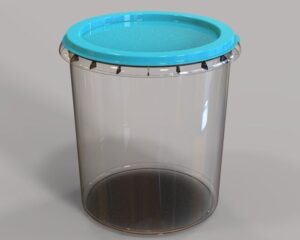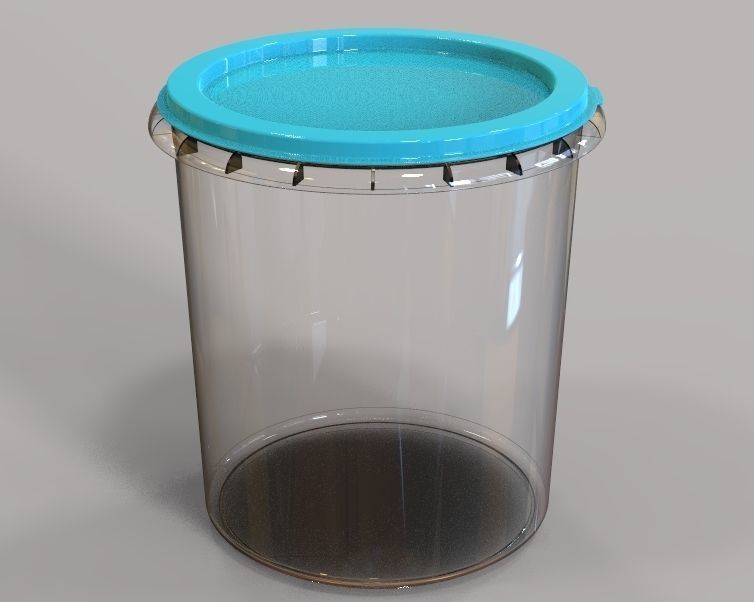Home Business Idea: Custom 3D Printing & Design Services
What It Is: Leveraging 3D printing technology to create custom, on-demand physical objects for a variety of clients. This business moves beyond simply "making items" to offering specialized solutions, whether it's prototyping, personalized goods, replacement parts, or artistic creations. The core value lies in customization, rapid iteration, and specialized production not easily achieved through mass manufacturing. Outlook: While traditional manufacturing jobs evolve, the demand for specialized, rapid prototyping, custom fabrication, and on-demand production is steadily increasing. The Bureau of Labor Statistics (BLS.gov) projects continued growth in roles involving industrial design and advanced manufacturing techniques, including 3D printing, with a projected 3% annual growth over the next decade. This indicates a growing market for businesses that can fulfill these niche needs, offering agility and customization that larger manufacturers cannot. Startup Cost: $300–$2,000+ (Quality Entry-Level to Mid-Range Printer, Filaments/Resins, Design Software, Post-Processing Tools, Computer, Basic Marketing Materials). While you can start with a basic printer, investing in a reliable machine and a diverse range of materials will broaden your service offerings and improve print quality. Skills Needed:- Creativity & Design Acumen: Essential for developing unique products and understanding client visions.
- Patience & Problem-Solving: 3D printing involves troubleshooting and iteration. Mastery takes consistent practice.
- CAD/3D Modeling Software Proficiency: Crucial for designing and modifying models. (e.g., Fusion 360, Tinkercad, Blender, SketchUp).
- Material Science Basics: Understanding different filament/resin properties (PLA, ABS, PETG, Nylon, Resins) and their best uses.
- Post-Processing Expertise: For professional finishes (sanding, painting, assembly).
- Customer Service & Communication: To understand client needs and manage expectations.
- Basic Business & Marketing: To identify target markets and promote services effectively.
- Define Your Niche & Target Market:
- Prototyping for Small Businesses/Inventors: Offer rapid iteration of product designs.
- Custom Merchandise/Promotional Items: Personalized keychains, phone stands, corporate gifts.
- Art & Jewelry: Unique wearable art, custom molds for casting.
- Hobbyist & Gaming Accessories: Custom miniatures, terrain, organizers.
- Replacement Parts/Functional Prints: Replicating obscure or broken parts for appliances, tools, or toys.
- Personalized Gifts & Decor: Custom lithophanes, unique home decor items, personalized keepsakes.
- Educational Models: Anatomical models, scientific diagrams, architectural mock-ups.
- Cosplay & Prop Making: Helmets, armor, intricate props for enthusiasts.
- Acquire Essential Equipment & Software:
- Printer: Research reliable, user-friendly models that fit your budget and intended niche (e.g., Creality Ender series, Prusa Mini/MK3S+, Elegoo Mars for resin).
- Filament/Resin Variety: Start with common materials (PLA, PETG) and expand as needed.
- Design Software: Free (Tinkercad, Blender) or paid (Fusion 360, SketchUp Pro) options.
- Slicer Software: Essential for preparing models for printing (e.g., Cura, PrusaSlicer).
- Post-Processing Tools: Sandpaper, files, cutters, glues, paints, safety gear (respirator, gloves).
- Master the Craft:
- Online Resources: Utilize YouTube tutorials, forums (Reddit r/3Dprinting), and specialized blogs (All3DP, Hackaday).
- Formal Education: Consider local community college courses or online platforms like Udemy, Coursera, and SkillShare for in-depth knowledge in CAD and 3D printing.
- Practice Relentlessly: Start with simple models, understand calibration, troubleshooting common issues (bed leveling, adhesion, stringing, warping), and experiment with different settings and materials.
- Develop Your Portfolio:
- Print high-quality examples of your best work, showcasing different materials, complexities, and applications relevant to your chosen niche.
- Take professional photos/videos of your prints for online showcasing.
- Set Up Your Business Infrastructure:
- Pricing Strategy: Calculate material costs, print time, design time, and desired profit margin. Consider per-hour rates or per-gram/mL rates for materials.
- Online Presence: Create a professional website, Etsy shop, or social media profiles (Instagram, TikTok) to showcase your work and attract clients.
- Payment Processing: Set up secure payment methods (e.g., Stripe, PayPal).
- Customer Communication: Establish clear channels for inquiries, orders, and updates.
 Pro Tips for Business Success:
Pro Tips for Business Success:
- Focus on Value, Not Just Prints: Instead of selling "a 3D print," sell "a custom-designed prototype that saves development time," or "a personalized gift that creates lasting memories."
- Specialize: Don't try to print everything for everyone. Niche down to become an expert in a specific type of printing (e.g., highly detailed resin prints, large-scale functional prototypes, specific artistic styles).
- Emphasize Design Services: Many clients have ideas but lack design skills. Offer to design custom models or modify existing ones for an additional fee. This adds significant value.
- Quality Control is Paramount: Sloppy prints will quickly damage your reputation. Invest time in calibration, maintenance, and post-processing for a professional finish.
- Document Everything: Keep detailed records of print settings, material usage, and client communication. This helps with consistency and troubleshooting.
- Networking: Connect with local businesses, makerspaces, and online communities. Attend craft fairs or maker markets to showcase your products.
- Manage Expectations: Be realistic about print times, material limitations, and potential imperfections. Communicate clearly with clients throughout the process.
- Invest in Safety: Always ensure proper ventilation, especially when using certain filaments or resins, and wear appropriate PPE.
- Stay Updated: The 3D printing industry evolves rapidly. Follow industry news, new material developments, and software updates to remain competitive.
- Leverage Online Platforms: Utilize sites like Thingiverse, YouMagine, and Cults3D for inspiration and printable models, but always consider licensing if using designs for commercial purposes. Learn about "slicers" (software that converts 3D models into printer instructions) and how to optimize settings for different prints.
- The First Layer is Gold: As mentioned, a perfect first layer is crucial for successful prints. Master bed leveling and adhesion techniques.
